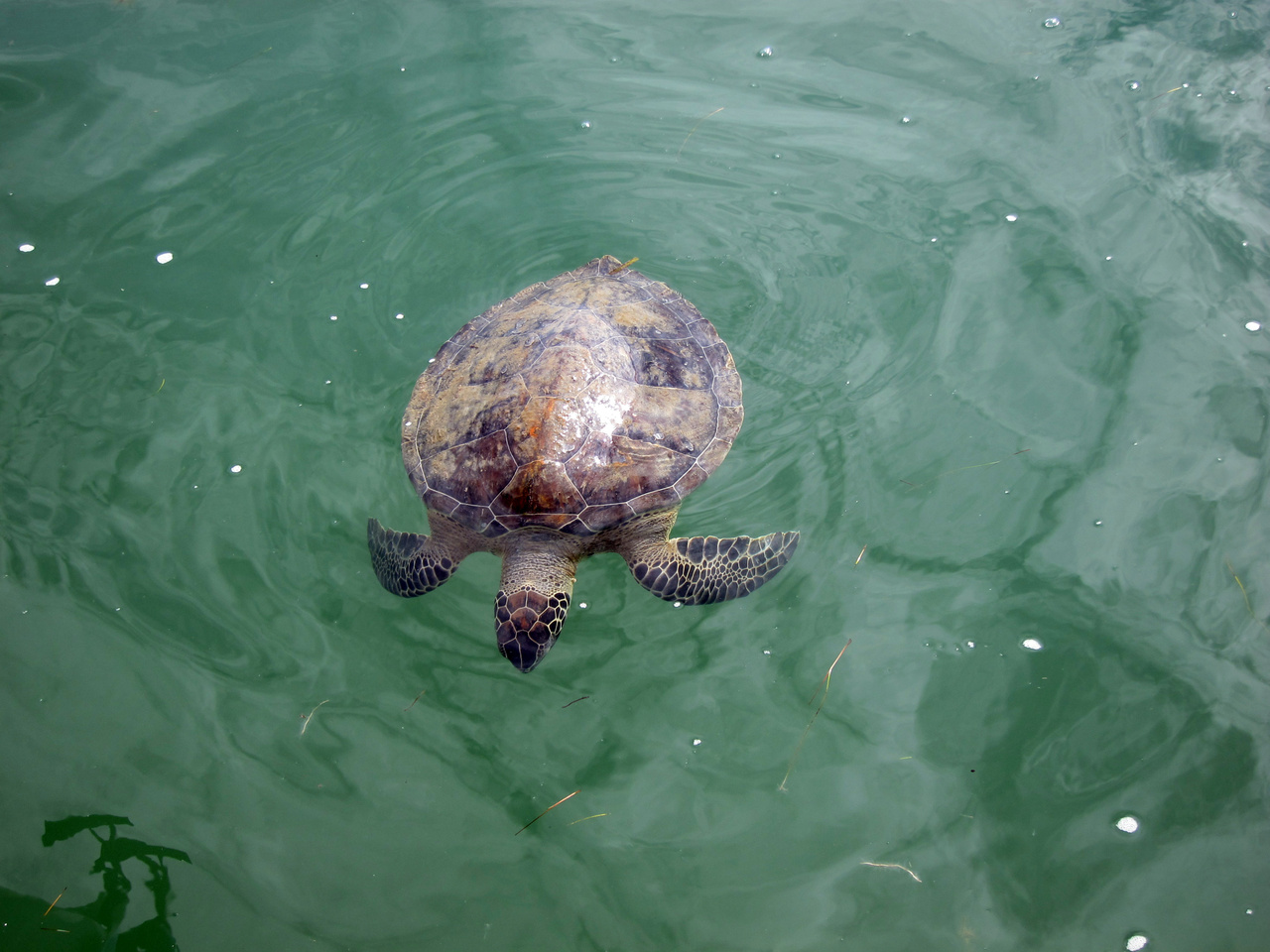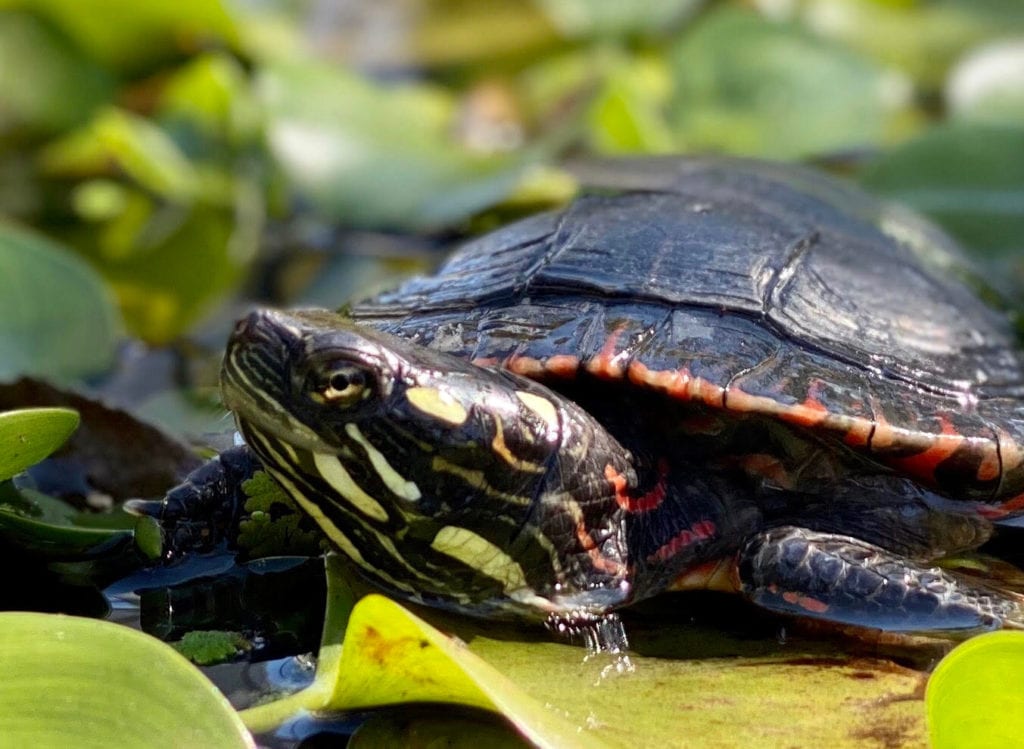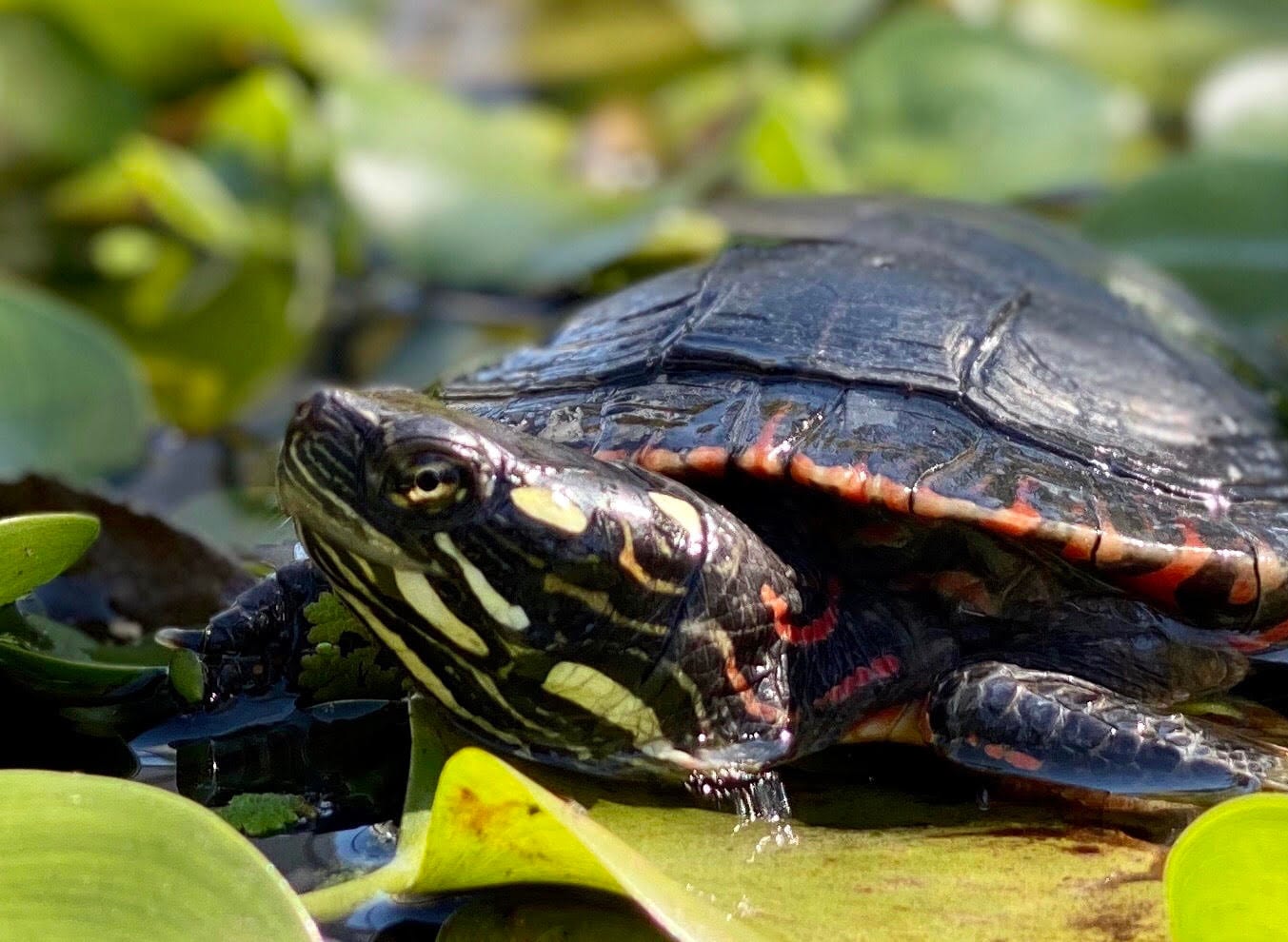Turtles can survive in temperatures above freezing, but they cannot survive being frozen solid. They are dependent on stored energy and oxygen in the water to support their minimal needs during the winter.
Turtles are fascinating creatures that have evolved several strategies to survive the cold winters. Unlike many animals that hibernate, turtles do not hibernate the same way; instead, they go to the bottom of a body of water and bury themselves in the mud.
This allows them to conserve energy and minimize their need for oxygen. As the cold sets in, their metabolism slows down, and they rely on stored energy and oxygen in the water to survive. However, it’s important to note that turtles cannot survive being frozen solid like some frogs can. We’ll explore the various adaptations that turtles have evolved to survive the winter and the challenges they face during this time.

How Turtles Survive In Winter
During winter, turtles have various survival mechanisms. One way is by burying themselves in the mud at the bottom of a nearby body of water. By doing this, they protect themselves from the freezing temperatures and harsh conditions above ground. As the turtle’s metabolism slows down, its minimal needs for survival decrease. Some turtles are even able to breathe underwater or in the mud through cloacal respiration, which means they can take in oxygen through their butts. Despite these adaptations, turtles cannot survive freezing. If the winter is too cold and the water freezes solid, the turtles will not be able to survive.

Factors Affecting Turtle Survival In Cold Temperatures
Factors affecting turtle survival in cold temperatures include:
- Thickness of Ice: Turtles cannot survive freezing solid like frogs can. If the ice doesn’t get too thick, the sun can reach the plants and help them stay alive, keeping the water oxygen-rich.
- Consistency of Cold Weather: Turtles do not hibernate the same way as most species. Instead, they go to the bottom of a body of water and bury themselves in mud until the weather is consistently warm again.
- Oxygen Availability in Water: Turtles depend on stored energy and oxygen in the water to support their minimal needs during winter. Some turtles are able to breathe underwater or in mud through cloacal respiration.
Remember, turtles cannot survive freezing. Understanding these factors can help us better protect turtle populations during colder months.
Specific Adaptations Of Turtles
Surviving in cold climates require special adaptations from turtles. Blanding’s Turtles in Algonquin Park are known for their ability to withstand low temperatures. Likewise, Painted Turtles have their own survival techniques, such as burrowing into the mud at the bottom of bodies of water. Turtles slow down their metabolism as the temperatures drop, relying on stored energy and oxygen in the water to survive. Some turtles are even capable of breathing underwater or in mud through cloacal respiration. Unlike many animals, turtles do not hibernate in the same way; instead, they remain dormant until consistently warm weather returns, making use of their unique abilities to survive the cold.
Common Questions And Concerns
How Cold Can Turtles Survive?
When it comes to cold survival, turtles have specific adaptations to endure low temperatures.
How Cold is Too Cold for a Turtle?
Turtles can survive at temperatures below freezing, but their ability to tolerate extreme cold varies among species.
Can Turtles Freeze and Stay Alive?
Turtles cannot survive being completely frozen, but they can endure being partly frozen.
Is it Bad for Turtle Tank Water to Get Cold?
Cold water can affect a turtle’s metabolism and immune system, so it’s important to monitor the tank temperature to ensure the turtle’s health.
Tips For Winter Care Of Turtles
Turtles require a suitable habitat to survive the cold winter months. This includes a spacious enclosure with proper substrate, such as soil or sand, that allows them to burrow and hide from the cold temperatures. Adding rocks, logs, and plants can provide additional hiding spots and natural shelter. It’s important to ensure that the habitat maintains a stable temperature, ideally between 50-70°F (10-21°C), to keep the turtles comfortable.
Regularly monitoring the temperature inside the turtle enclosure is crucial during winter. Using a reliable thermometer, you can ensure that the temperature remains within the appropriate range. To provide additional warmth, you can use a heat lamp or heating pad. Remember to position the heat source in a way that allows the turtles to choose their preferred temperature by moving closer or farther away from it.
Although turtles may eat less during winter, it’s important to provide them with a balanced diet. This includes offering a variety of vegetation, such as leafy greens and vegetables, as well as insects and worms as protein sources. Additionally, ensuring access to clean water and providing regular hydration is crucial for the overall health and well-being of the turtles.

Conclusion
Turtles are remarkable creatures that have adapted to survive in various environments, including cold temperatures. They do not hibernate like other species but instead find refuge at the bottom of bodies of water, burying themselves in the mud. By slowing down their metabolism and relying on stored energy and oxygen, turtles can withstand the winter months.
While they cannot survive freezing solid like some frogs, turtles are resilient and can endure colder temperatures than one might expect. Their ability to adapt and survive in the cold is truly fascinating.





Leave a Reply